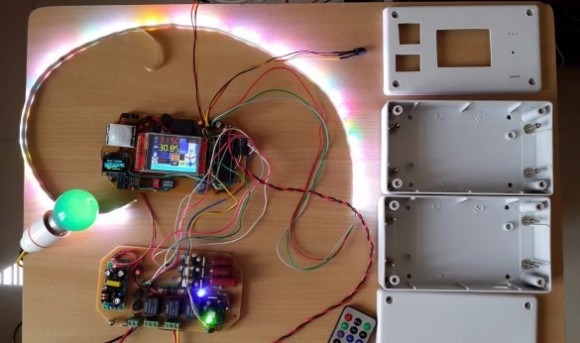IOT enabled AC wall outlet

Gopinath.Marappan has posted great instructions about how he built an IoT enabled AC wall outlet using Arduino and ESP8266 platforms, along with a bunch of sensors, relays, and LCD displays. It features light and fan On/Off control, fan speed regulator, mood lighting, and cloud datalogger. It also allows IR remote control, amartphone app control, twitter and SMS alerts, and many more features.
This project was conceived when I felt the need to automatically reduce the speed of an AC ceiling fan in the bedroom as temperature drops through the night. In Bangalore, where I live, during winters, I like to switch on the fan when I go to sleep. But early mornings, when the temperature drops, the fan makes it even colder. Which disturbs my sleep and I don’t want to or cant get up to reduce the speed or switch off the fan since the wall socket is not close to the bed. So I needed a way to automatically shutoff the fan or reduce its speed in the mornings and thought of building one myself since there aren’t any commercial products already available in the market. I know, I know, there are bigger problems to solve in this world, but I guess this problem needs solving too, so what the heck 🙂
.


